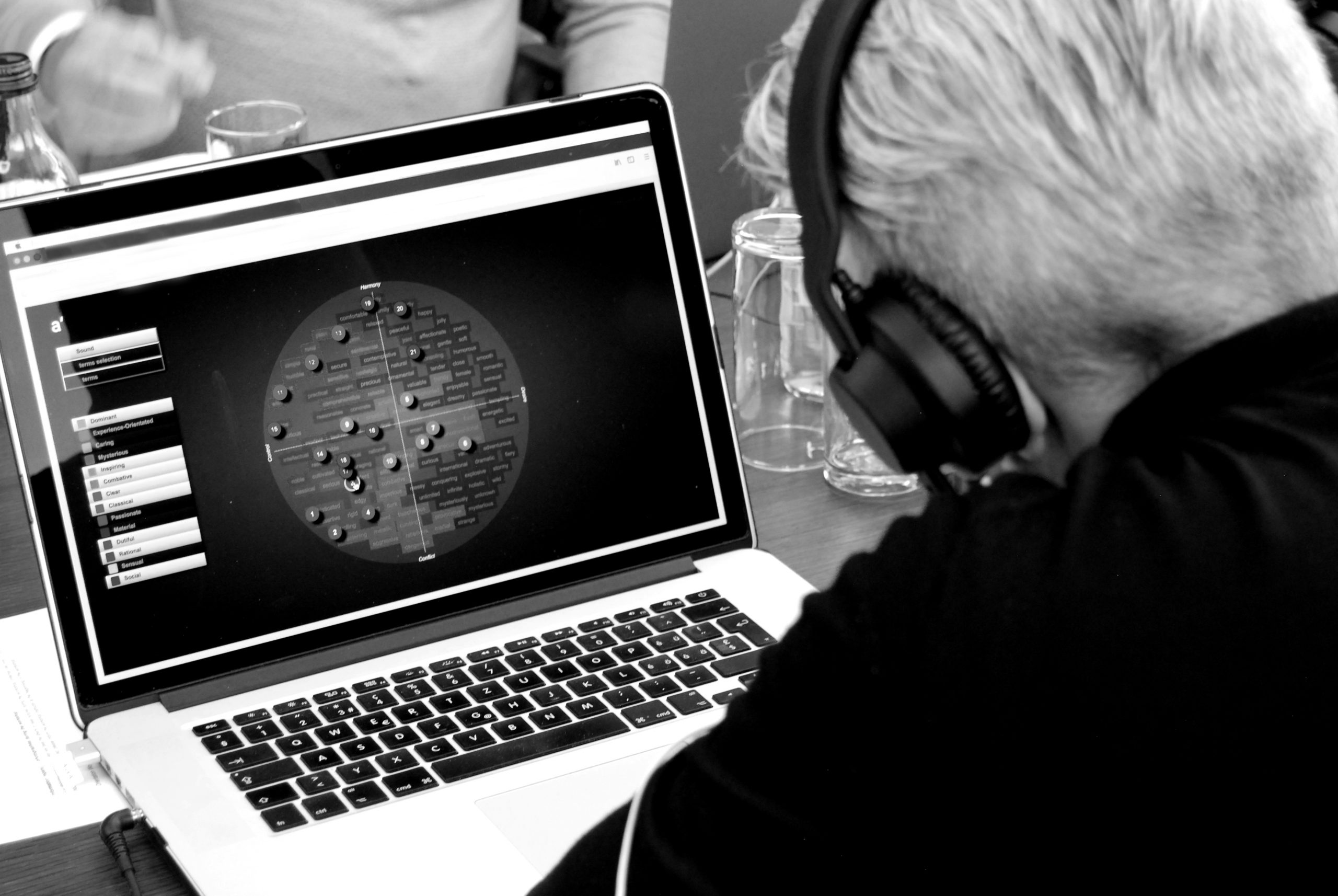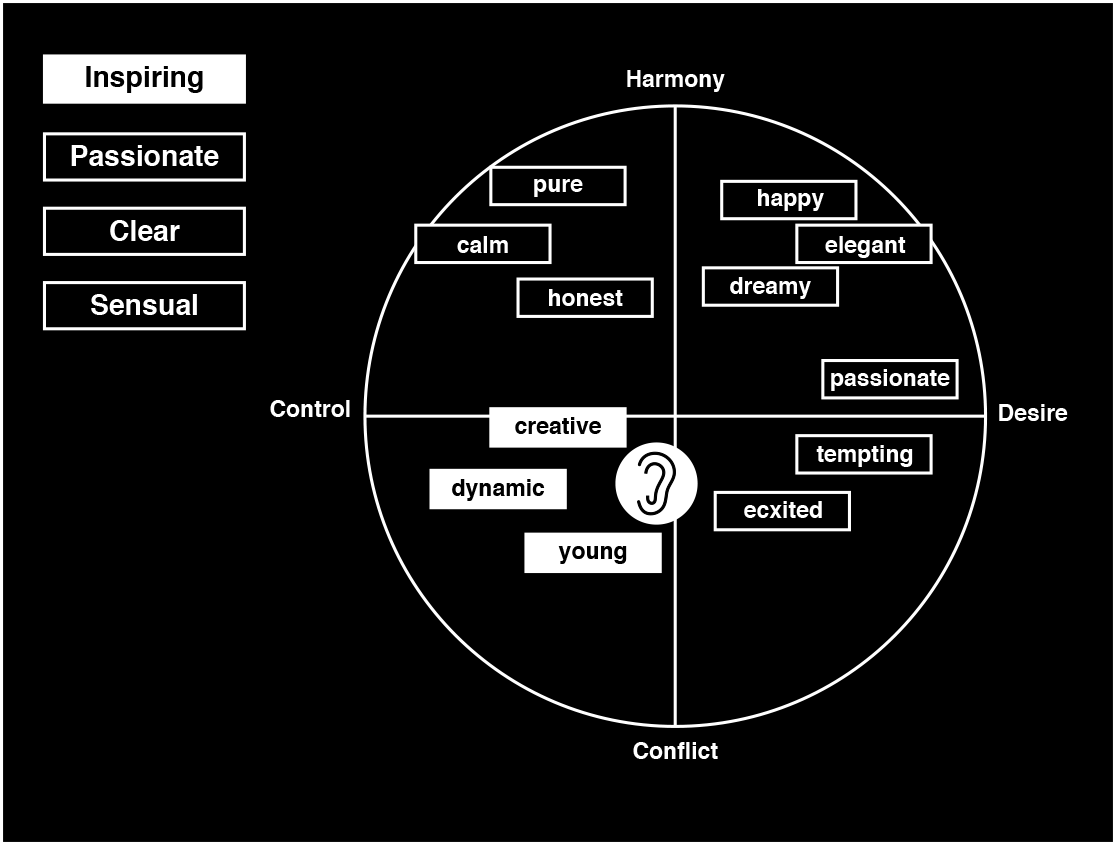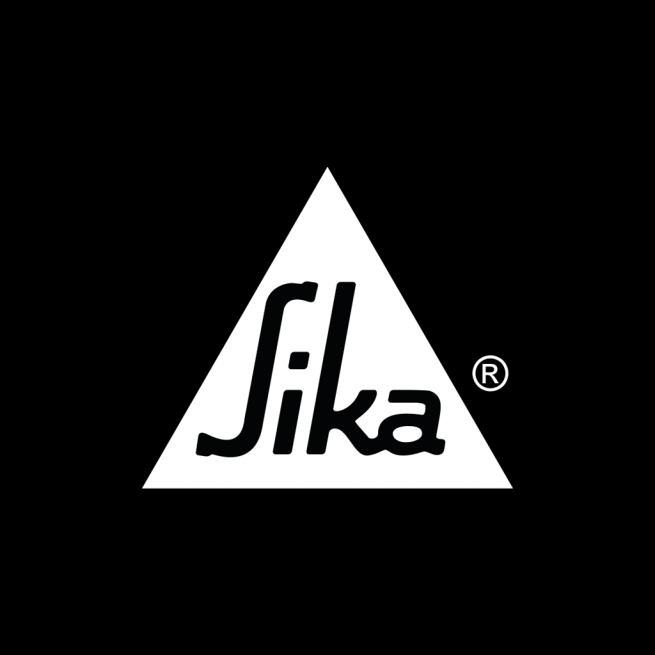How to find the right sound for a brand
What approaches and methods exists to translate a brand into »sound«? What role do brand values play here and what does the customer’s taste in music have to do with it?
Hi! We are audity and we help companies make their brand and products better through the right sound. Today we would like to address an important question we are often asked:
How do you actually find the right sound for a brand?
First of all, it is important to note that a brand can be viewed from different perspectives.
On the one hand, there is the self-image and on the other hand the external image.
Principally, the self-image is the perception or, in some cases, the wishful thinking that the brand creators have of their brand.
And this brand identity is often described by characteristics such as brand values or »brand personality traits«.
The external image, in contrast, is the perception of a brand from the point of view of the customers or product users. In other words, all the people whom you as a »brand sender« would like to address and win over – the so-called target group.
In addition to the self-image and the external image, there are other framework conditions that are important for a sound translation. These include the competitive situation, clarification of rights, and consideration of technical conditions.
Basically, these are already the most important perspectives that are important for the derivation of a sound branding, brand or corporate sound.
And now let’s take a detailed look at what options we have in each case:

1. who wants to sound?
2. who listens?
3. how do the others sound?
4. technical conditions and other restrictions
1. who wants to sound?
The sound translation of the brand design (the identity brought to form)
This refers to all (primarily visual) features and elements that characterize the brand. In other words, the corporate design elements such as logo, colors, visual language and, in the case of some brands, also the wording – the so-called tone of voice.
Often, a good guiding principle for the brand sound already lies in the brand name.
For example, in the way the brand is pronounced. The prosody, i.e. the speech melody, can become a musical recognition feature or provide other fertile ground for creative ideas.
Furthermore, it is worth taking a closer look at the design elements and deriving design ideas as to how they might sound in purely formal terms? How does light blue, a round logo or a word mark in »futura extra bold« sound?
This sounds rather weird and abstract at first, but it is actually a valuable aspect of acoustic brand translation.
For example, there are so-called intermodal analogies that everyone uses in everyday life. The point is that there is a connection between all the senses.
In everyday life, for example, people also talk about a round wine or a glaring sound. These intermodal analogies can be ideally used to translate design elements as a first design method.
The sound translation of the product / The use of product sounds.
The products themselves can also often be used as an important sound basis. For example, when it comes to products that emit sounds such as machines, devices or means of transport.Sometimes you even have the chance to »prove« a certain generic sound for a brand, because no other manufacturer has done it yet (example Festool product sounds of power tools in the sound logo, Flensburg bottle cap).
The sound translation of brand values

The next option of translation opportunities is to look at how the brand is described in terms of its values and characteristics.
Brand positioning, brand models:
Brand Archetypes (Based on the archetypes of the famous Swiss psychoanalyst Carl Gustav Jung).
The archetypes describe the special characteristics of the brand (or how it would like to be experienced).
Through the archetypes one can deduce a lot about the general handling of sound elements.
One speaks then of the Brand-Sound-Principles.
While a »The Caregiver« relies on the use of familiar sounds, the »The Creator« cannot be innovative enough. And in each case, not only the sound itself is meant, but also the treatment of sound (e.g., which tools are used in the application, which communication channels are used or even newly created).
Meanwhile, almost every brand or branding agency has its own positioning models – which are all very similar.
Basically, all models are about describing a brand in all its desired facets and characteristics.

Takeaways:
All brand models are similar and the translation of a brand into sound is not only dependent on brand values.
Creativity and the will to innovate are mandatory in order to develop an independent acoustic brand identity.
2. who listens?
Know which sounds customers like to hear.
If brand builders want to know what is important for the audience that will listen to the brand sound in the future, there are many different ways to describe the target groups.
We encounter approaches ranging from market or social research to neuropsychology.
Some approaches are very well suited for our sound translation, others rather not.
Note:
In all target group descriptions, it is always important to take into account that musical preferences are also subject to a zeitgeist and, depending on brand positioning, to trends. This half-life should always be taken into account.
Some brands can use the same song for decades, while for others stylistic variety is an important criterion.
Which methods from market or social research are most appropriate and how well?
The well-known Sinus Milieus are only limited, since no music is surveyed.
In contrast, the »Schulze Milieus« are quite applicable, since music is also taken into account (note: unfortunately a bit outdated).
Description of target group characteristics via psychographic characteristics – in the form of values (semiometry).
Target group classification according to neuropsychological approaches / keyword neuromarketing. So brain research meets consumer research. In this approach, the goal is to position a brand in such a way that it is in harmony with emotional motives (and thus also purchasing decisions).
In addition to the classic tools of market and social research, it is of course worthwhile to take a look at the listening and usage behavior of the intended target group in the currently important channels such as Spotify, Facebook, Instagram or TikTok in order to determine the musical preferences of the desired target group(s).
Which songs and styles are frequently listened to by the target group. What is the direct interaction of beats and tracks – on TikTok, for example.
All this information helps to better understand the target group and to meet them as a brand with the right (liked) sound.

Takeaways:
There is a difference between a »do it, please everyone« (music preference of the target group) and an identity-based approach (brand identity).
Using only music that a target group prefers does not lead to an sonic brand identity.
3. how do the »others« sound?
Tools & How-to
It’s good to know what the competition sounds like. First, to avoid confusion and second, to find niches.
How to:
1. research on the publicly available channels such as website, social media or press reports.
2. user interviews – what sounds from other competitors can the target audience name?
3. use professional tools/services.
There are good tools here, such as the »Audio Logo Database“ of the Audio Branding Academy (unfortunately no longer active) or the „audity Brand Sound Archive“ (please contact us if you are interested: hello(at)audity.co).
4. technical framework and restrictions
In many cases, a sound identity is developed for a company that is intended to support digital or physical products in addition to brand communication.
Here, the technical framework conditions and possible restrictions should be taken into account right from the start. After all, what’s the point of a great sound concept that then doesn’t work or works badly when it comes to device integration?
Side issues:
What about copyright, rights of use and exploitation?
(Copyright, P.R.O., buy-out, sound brand protection )
Wasn’t there something about artificial intelligence?
Yes, they are there, the first approaches with A.I. for objective evaluation or for research purposes of music pieces.
You can find approaches to reduce human misjudgements based on subjective opinions or to predict which pieces of music will be especially liked by a certain target group. In a separate article, we will look at our experiences with currently available technological solutions, the concrete benefits but also risks and weaknesses for acoustic brand management.

Take-aways / SUMMARY:
All brand models are similar and the translation of a brand into sound is not only dependent on brand values.
Creativity and the will to innovate are mandatory in order to develop an independent acoustic brand identity.
There is a difference between »pleasing everyone« (music preference of the target group) and an identity (brand identity).
Using only the music that a target group prefers does not lead to an audible brand identity.
After a sound has been developed, it should be »waterproof« against liability claims by third parties and the person who developed it (copyrights, property rights, rights of use, ancillary copyrights, exploitation and performance rights).
Would you like to learn more about how your brand can be translated into an audible dimension?
Feel free to contact us.
Your contact
Rainer Hirt
+ 49 (0) 75 31 36 38 524
rh@audity.co
LinkedIn





















